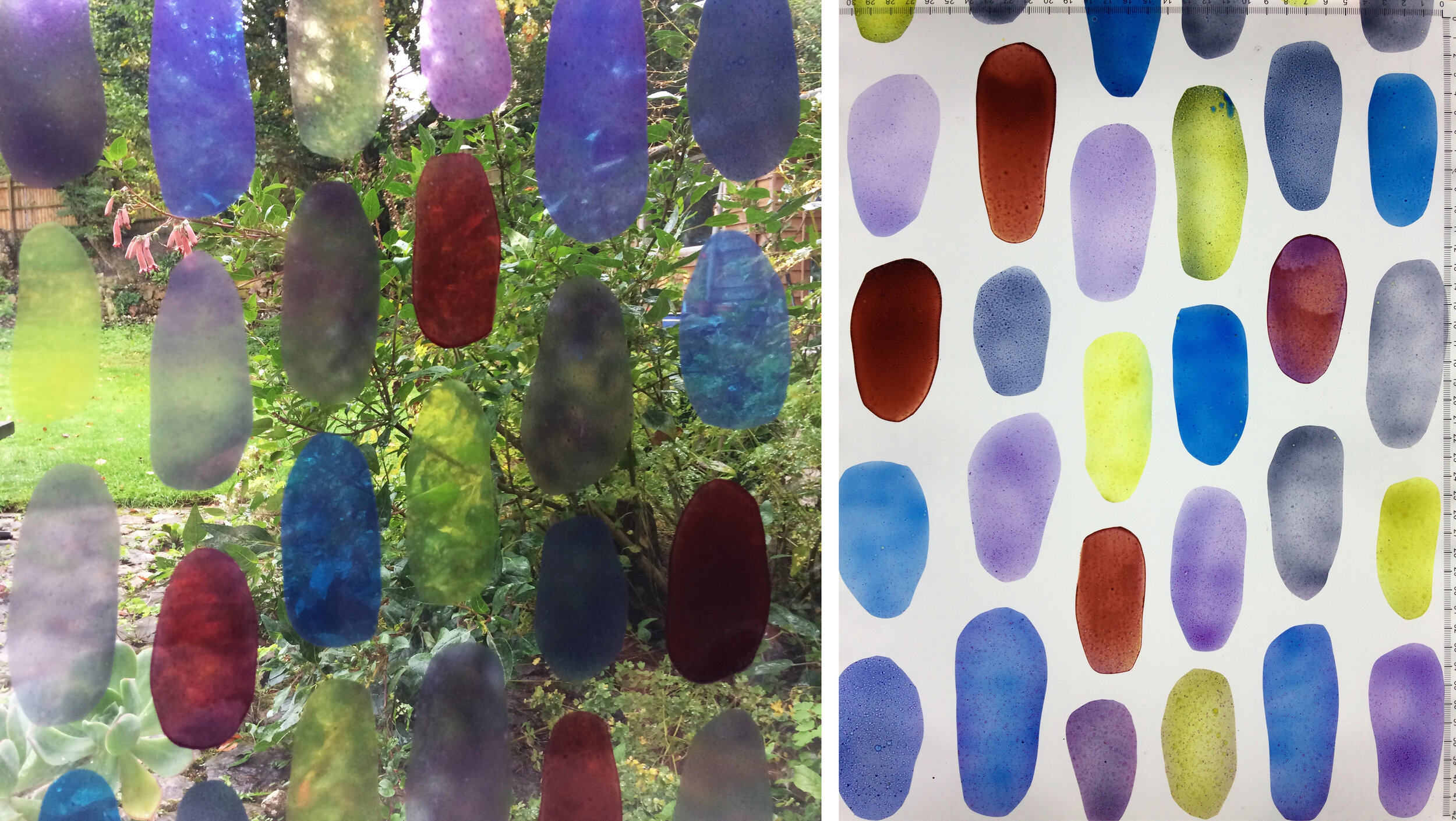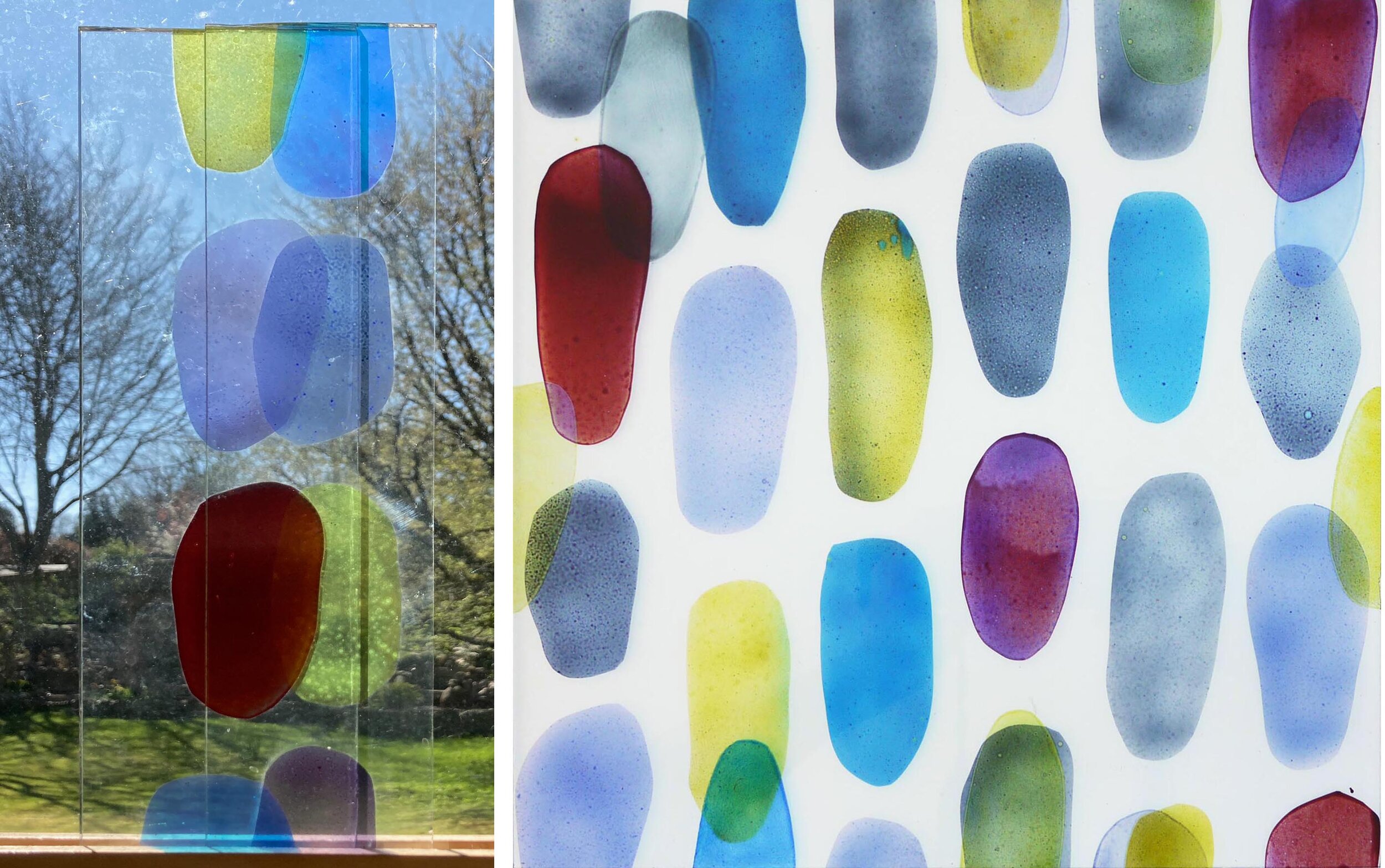West Dean weekend student work: 1. simple leading 2. simple but lots of pieces 3. soldering a less simple design.
The adult beginner’s weekend stained glass course is a bit of a rushed affair. There are so many stages to learn, including the most important one of how to design a simple stained glass window, something I like each student to do for themselves. I felt a sense of triumph on last weekend’s course at West Dean College (which will be the last weekend course I teach) as a student actually made a window that was really simple and easy to make, yet original (1 above left). As you can see, the creeping inaccuracy of the cutting meant that the glass pieces didn’t fit the paper pattern once leaded, but easy to cut means easy to trim down if you have to.
West Dean student work in progress: 4. work bench 5. round panel pieces cut 6. panel cemented but not cleaned.
Mostly the students don’t follow my advice to keep it simple and come armed with examples of the sort of organic or representational thing they want to make. It’s only as you make the stained glass panel that you understand the pitfalls, why some shapes are easy to cut but hard to lead, like the orange star burst which is being soldered at 3 top right. This means that it’s not the number of pieces that makes a design doable or not in a weekend, for example 2 top centre & 4 above right (which has over 40 pieces of glass) were both simple to make because of the leading pattern. The round panel (5 above centre) was only just doable for a beginner, but there is always the possibility of skipping the last stage and taking the cement in a bag to do at home, or taking the panel home dirty, like 6 above right.
West Dean student work with sandblasting: 7. paper plan wave 8. around the edges 9. butterfly antennae.
We don’t have the use of a kiln on this short course, but we do have a sandblaster which gives you a different way of adding detail. In 7. (above left) a wave has been added to give the much desired organic feel, linking the pieces with three lines. Painting, or drawing and sandblasting, across the lead lines is something else I find it hard to persuade students to do, you can see another example of linking pieces with sandblasting in the wobbly circles at 12 below right. Sandblasting a section around the edges of adjacent pieces was also effective in 8 above centre, giving the finished panel a chunky appearance that went well with the blocks of glass.
West Dean finished panels: abstract designs with curves and sandbalsting. 10, 11 & 12.
It’s great when a design that is supposed to represent something actually works. The butterfly (above right) is an obvious example, but the three landscape panels below are very satisfying. The river estuary that is both curvy and geometric (13), the palm tree that floats above its trunk (14) and the lighthouse (15) that is immediately recognisable but so subtle all provide a perfect end to my teaching of the weekend course.
West Dean landscape panels: 13. river estuary 14. palm tree 15. lighthouse.





























